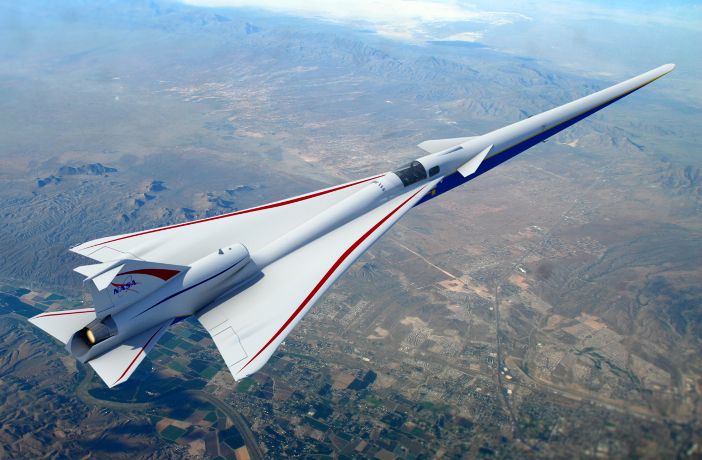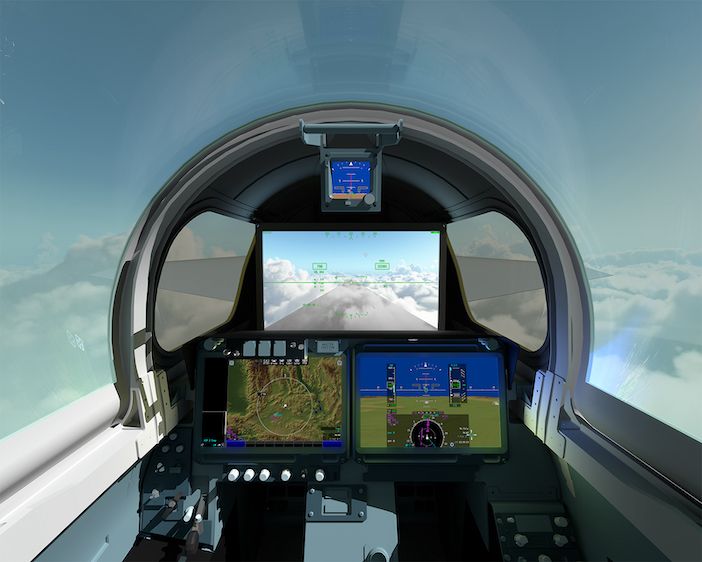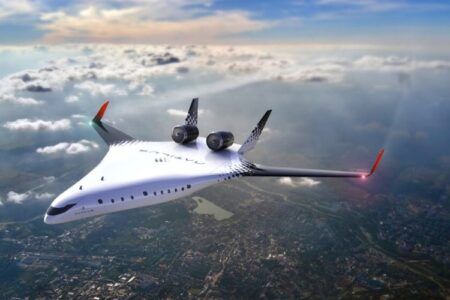Collins Aerospace has supplied the avionics for the X-59 QueSST supersonic aircraft to NASA ahead of its first flight tests next year.
NASA’s X-59 QueSST (Quiet SuperSonic Technology) does not have any forward-looking windows in its cockpit and instead uses a bespoke large display and avionics system developed by Collins, NASA and Lockheed Martin.
The custom-built system includes a large 4K screen instead of a forward looking window in the cockpit displaying video and data.

Artist’s impression of X59 QueSST (Image:NASA)Dave Schreck, vice president and general manager for military avionics and helicopters at Collins Aerospace said, “The X-59 is expected to create a noise about as loud as a car door closing instead of a sonic boom when it breaks the sound barrier.
“This aircraft has the ability to shape the future of supersonic travel and our avionics are helping make this revolutionary aircraft a reality. We’re excited as we countdown the days until we see it fly.”
The X-59 has a long and slender airframe with a 30-foot-long nose to help reduce the sound of sonic booms, but the shape prevents it from having a forward-looking window.
Instead NASA has developed an eXternal Vision System to enable X-59 pilots to safely navigate the skies. The system consists of a 4K monitor, displaying images from two cameras outside of the aircraft combined with terrain data from an advanced computing system.
The system and its software has been developed by Lockheed Martin Skunk Works, NASA and Collins Aerospace. It makes use of Collins’ touchscreen technology with tailored multi-function windows, head-up display (HUD) symbology, synthetic vision, ARC-210 communication radios, and a suite of navigation and surveillance equipment.
In addition, Collins has integrated its multi-spectral enhanced vision system (EVS-3600) into the X-59 to enable pilots to land in nearly all weather conditions using visual sensors and multiple wavelength, infrared technology.
The X-59 QueSST is expected to make its first flight in 2022. After a series of initial check out and acoustic validation flights, it will fly over urban areas in the USA so NASA engineers can collect data on the acceptability of the sonic thump generated by the aircraft.
The data will be given to regulators to establish an acceptable commercial supersonic noise standard and change current regulations banning commercial supersonic travel over land.
Related content
Feature: The next generation of supersonic passenger aircraft
NASA reveals supersonic X-59 QueSST test aircraft engines
NASA and Lockheed Martin commence QueSST high-speed wind tunnel tests





